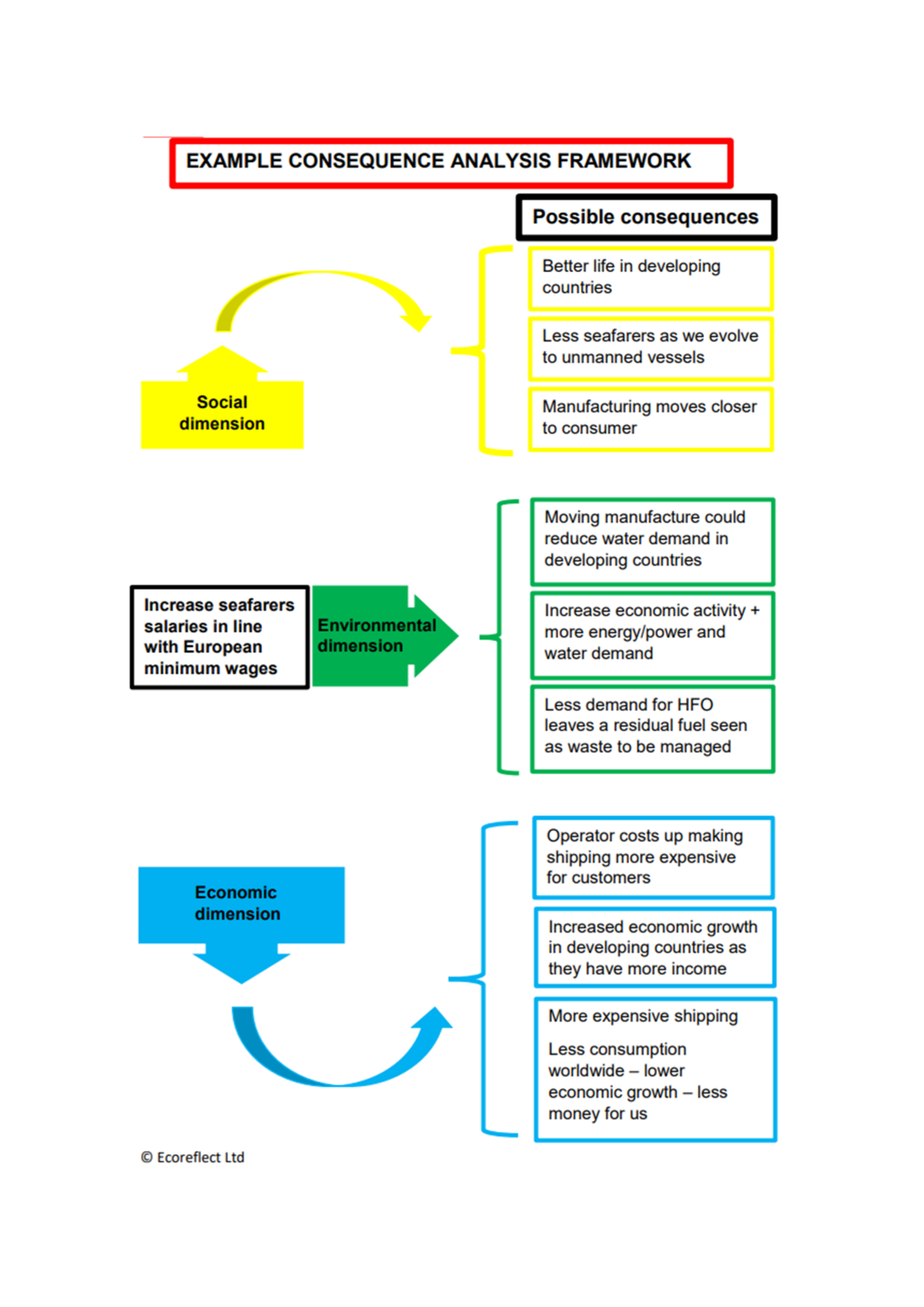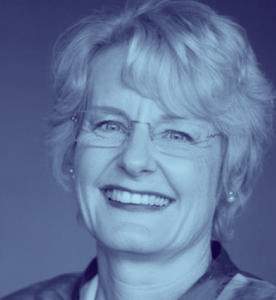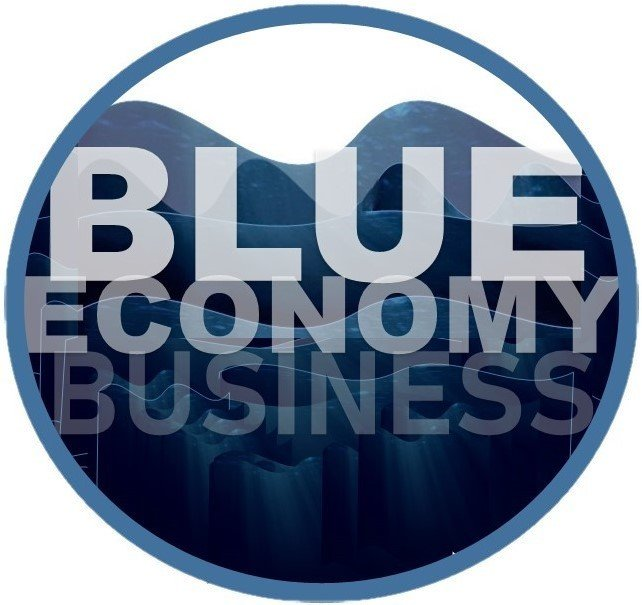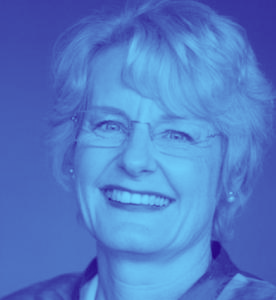INTERVIEWS
"Oceans together with climate change are the big global challenges to humanity's survival and it needs a cooperative global solution. Climate change contributes significantly to the degradation of the oceans and increase in Arctic and Antarctic ice melting. Oceans have been acting as a mitigation mechanism for climate change by absorbing CO2 generated by us humans. We need to understand what is happening..."
Dr Anne-Marie Warris has over 25 years’ experience in sustainable matters and is a leading expert in climate change and environmental issues. She was voted onto the top ten of the Environmentalist power list by readers of The Environmentalist in July 2014.
In conversation with BEB, Dr Anne-Marie Warris considers the tools and skills needed to achieve a vision of a sustainable ocean
How likely is it that there will be a movement towards establishing global business ocean risk?
Highly likely! Because changes in the ocean are so often invisible to the human eye and they can be therefore hard to visualise, grasp and understand clearly enough to take consistent action on.
So, what products or services could might make a more visible andy effective impact - and how might innovation in these fields these affect the choices we make?
In terms of leisure and business? I propose two approaches both with its challenges and opportunities:
1. An “Ocean footprint” something akin to carbon footprint or life cycle assessment (LCA)
2. Ocean considerations formally embedded in the circular economy processes
I propose that we need both! One as communication tool to consumer (1) and the other a business tool to change processes to align with circular economy (2) to focus away from purely ROI/ financial benefit and instead on value creation.
Environmental and carbon footprints/ LCA (UNEP LCA date base) are intended to help inform consumers’ purchase decisions, be they B2B or B2C. The validity to the consumer of the data has several challenges, but even knowing these challenges, it is still feasible to see an ‘ocean LCA’ focused on the impact on oceans of specific products / services. The importance will be learning from experience and working cooperatively. Circular economy system standardisation is ongoing and I expect it to make a significant difference to our products and services going forward.
We are all responsible for ocean change and so we need to be aware that our actions should take account of challenges such as poverty, social injustices, ecosystem degradation and climate change.
Business can be immensely innovative given the right motivation. What factor would you say is the biggest driver? And what will be the biggest achievement?
The biggest driver for change excluding compliance and commercial factors is the focused commitment of a CEO/CSO or other leader making a difference – examples such as Paul Polman or Mike Berry or Steve Howard spring to mind. The second driver is consumer / investor ESG (environmental, social and governance) pressure which many NGOs or and investors ensure is growing. The third driver is competitive pressure, but while significant enough to stimulate global change it is only effective in combination with the other two. drivers.
The biggest achievement for me would be when we live within the capacity of the Earth to renew itself on an annual basis and we have eradicated poverty and inequalities. Business and individuals must all contribute and cooperate to achieve this.
The ocean is as geographically diverse as our landscape - which regions are leading the way in creating a sustainable future?
Our direct use of ocean resources can affect the health of even remote parts of the ocean. That impact may be generatedemerge a long way away from its origin. It can far away but still have a significant impact, whether visible plastic pollution and effluent discharges or invisible changes associated with climate change such as those to our coral reefs.
There is no single leader but many disparately diverse contributors interacting with each other - like rivers and streams if you like - all connecting to the ocean. We need them all these institutions to make a difference; by sharing and learning from each other to better tackle the needs of the ocean.
A few examples of these contributors: the World Ocean Council in 2008 initiated cooperation across boundaries and stakeholders, in 2018 the UN Global Compact put together Action Platform for Sustainable Ocean Business. Within the context of the UN, the appointment of Peter Thomson as the UN Special Envoy for the Oceans, as well as the UN Ocean Conferences which have been co-hosted by the Governments of Fiji and Sweden and the next is to be hosted by Portugal and Kenya. - hopefully. Academically, at UN level, the World Maritime University (WMU) has, with funding from The Nippon Foundation set up the WMU-Sasakawa Global Ocean Institute (Global Ocean Institute).
Regional or topic leads come from too many areas to mention in full, but there are examples of the increase in the designation of marine protected areas by the IMO and small island states; the increased focus on coral reefs and their health and contribution to marine biodiversity as well as the focus on sustainable fishing.
Holistically, UNSDG 14 deals with the ocean. Why does ocean industry need to look at other UN SDG Sustainable Development Goals?
Why do we need to think holistically about UN SDGs.? Because if we do not, it allows us to assume we are in danger of suggesting that SDGs and their targets can be broken down and solved individually. Which is not possible! In fact, they are interconnected at all levels from minor to major. Action in on one target may negatively or positively affect other targets of SDGs.
At present much of our thinking and writing about sustainability relates to a specific SDG or a specific sustainable area in isolation from others. And there is limited awareness of the consequences across other sustainable areas when you deal with just one SDG. The risk inherent in this approach is illustrated with John Elkington “management concept recall” on the “triple bottom line” on its the 25th Anniversary in 2018. He is proposing a “triple helix for value creation” as well as challenging us with the concept of “Green Swans”.
We need to use SDGs holistically as we tackle the fact that our ecosystem is out of balance, and we are consuming more of Eearth’s resources than is commensurate with sustainable use of earth’s resources. Why? Because on the 22 August 2020 we commemorated Earth overshoot day. From that day until end of that year we consumed more resources than our planet could have renewed in the entire year.
We need to take a holistic approach and tackle the difficult challenge of balancing one SDG and its targets with another SDG. To achieve this, we need to cooperate and work together, as the issues are not related to one stakeholder category or another. We are all affected, and we can all make a difference.
What are the most critical areas requiring ocean governance?
Oceans together with climate change are the big global challenges to humanity’s survival (not to the earth’s survival) and it needs a global solution and cooperation.
Climate change contributes significantly to the degradation of the oceans and the increase in melting Arctic and Antarctic ice. Oceans have been acting as a mitigation mechanism for climate change by absorbing CO2 generated by human activities. We need to understand in more detail what is happening and track how our solutions are impacting ocean health.
To provide more detail, let us start with a network of monitoring stations across our oceans. We mainly monitor and measure close to land or on a few specific few installations at sea. Critical monitoring needs to relate to ocean health, biodiversity and , ocean resources such as fish, plankton, corals, etc. This would include pollution load from land-based and ocean-based operations, as well as from rivers and discharges direct to the sea.
An approach to achieving this would be to encourage commercial shipping to carry monitoring sensors or systems to measure ocean variables that would be automatically uploaded to satellites together with position, allowing researchers to understand what is happening in the main shipping lane. This is would cover only a small part of the ocean, so let us add solar power floating monitoring buoys that could float freely or be steered to specific areas of the oceans.
Data that is publicly available and open sourced from these monitoring approaches can then be used to inform decision makers, be they international, regional, or national or voluntary standard makers, or other interested parties. This could allow us to develop practical tools such as standards to help at a variety of levels.
What are the most critical areas requiring standards?
The term standard is used in its broader context not just reflecting voluntary standards that are developed via ISO (International Standardization Organisation) but also standards that are developed by other organisations be they organisational, government or NGO driven. There is a lot of innovation and development needed which should encourage involvement in relation to standards. Critical is global standards that help to:
· support BBNJ (Biodiversity Beyond Areas of National Jurisdiction) legislation
· determine and monitor the health of our oceans and interpreting the result generated by the monitoring. These should not be limited to temperature or/ acidification impact on the oceans and its biodiversity and ecosystem services, since – as some of these already exist
· allow performance monitoring and measurement of ocean health, its changes and improvements/deteriorations, including ocean currents such as the North Atlantic Ocean circulation
· deal with sector specific issues to minimise impact on biodiversity such as ‘sea-bed mining’, oil spills from ships or discharges from ships (which is within International Maritime Organisation (IMO) purview)
· evaluate holistically, the best methods for managing specific topics or impacts such as:
o how to determine coastal erosion and how to protect coastlines – not just the building of concrete defences but other, more suitable sustainable approaches such as coral reef regeneration.
o discharge of nutrient rich water, (be that nitrogen or other elements) into our rivers and oceans. – Tthese in the main exist, but are they stringent enough?
The shipping industry is under pressure to meet the demands of SDG14 as well as other SDGs. What about existing controls?
With 90% of goods being transported by sea, commercial international shipping is regulated by the UN agency International Maritime Organisation (IMO). On their agenda are issues related to SDG 14, such as marine protective areas and, pollution from ships under MARPOL Annex I . Aand invasive species under the Ballast Water Management Convention, including biofouling and noise. B, but there are also issues relating to other SDGs such as ‘future fuels’ beyond the use of fossil fuels (SDG13); Sulphur limits in fuels from 2020 (SDG3), seafarers health and well-being (SDG3); climate change issues (SDG13), to name but a few.
In terms of cooperation there are several initiatives in the shipping sector – joint projects with GEF-UNDP-IMO such as GloFouling dealing with biofouling; GloMeep aimed at supporting the uptake and implementation of energy efficiency measures for shipping); GloBallast aimed at cooperation in the area of ballast water management; industry lead initiatives such as Sustainable Shipping Initiative and its roadmap to 2040
What else should shipping be aware of when tackling goal 14? How are investors viewing this?
The significant issue for business is the investor driven ESG such as the climate focus of Poseidon Principles where “18 leading banks, jointly representing approximately USD 150 billion in shipping finance” have come together to drive decarbonisation.
This is not simple and no ocean sector is simple, at all. Shipping is not a uniform sector since there are different types of cargo transportation which are removed from consumer experience. The further awaygreater the distance between operations and from customers the less likely SDG and pressures from investors related to ESG have an impact. Compliance will be the driving force. To take a few examples:
· cruise or ferry segment - for whom consumer views are an important part of business decisions and risk evaluations. It’s very similar to retail.
· container segment – while distanced from the consumer – have a very active social media platform and are brand aware as Splash24 reported. They are actively engaged in the SDG discussion not just SDG14. They are close enough to consumers due to the businesses they serve.
· ship owners who mainly charter their tanker or bulk carriers for others to operate. Critical for them will be compliance and any demand that charterers make,so, SDGs are not necessarily on their list of tasks.
The challenge is finding tools that will help shipping think holistically about UN SDGs. At a WMU Maritime Women Global Leadership Conference in 2014 I argued that we need tools to help us ask the questions that encourage us to consider all the implications of a specific choice in relation to sustainability. The illustration below aims to show some of the challenges we face when evaluating a proposed change across several sustainable dimensions. There are many tools out there but the complexity of John Elkington’s ‘triple helix’ has to be conveyed somehow to help organisations to evaluate beyond ROI so they can drive transformation.
Why are you hopeful for our oceans?
My glass is always half full, so I am optimistic about our oceans and hopeful about preserving them. Look at the amazing work done on coral reef regrowth and coral seeding. Paraphrasing and borrowing from the work on “Hype Cycle” and using the same five stages (albeit relating to ocean protection), I am optimistic we are finding ourselves on the “slope of enlightenment”.
*This interview took place prior to July 2022 and the UN Ocean Conference
Anne-Marie is an experienced chair and facilitator and a leading expert in sustainable, climate change and environmental issues. She presented the Royal Academy of Engineering invited lecture on ‘A low carbon world – is it realistic?’ in April 2010. She was voted the sixth most influential woman in shipping by the www.allaboutshipping.co.uk Top 100 women in Shipping for 2019. And onto the top ten on the inaugural Environmentalist power list by readers of The Environmentalist in July 2014. Anne-Marie was awarded Women’s International Shipping and Trading Association UK (WISTA UK) Personality of Year for 2013. and was awarded BSI International Standards Maker Award in 2015 for her standard work.
She was one of the drivers behind the ‘Sustainable Shipping Initiative’. Her current focus is chairing the Board of CCell Renewables Ltd a small cutting-edge technology company who grow reefs which protect coastlines and restore vital coral ecosystems, chairing BSI committee on conformity assessment standards and representing BSI at CASCO, being an active board director of Verra (Verified Carbon Standard) including chairing the finance committee, attending IMO Marine Environmental Protection Committee and supporting BSI Environmental Committees at national and European level.
She blogs at Bunker World and lectures on an ongoing basis at the World Maritime University on sustainability, climate change, MRV, IMO Data Collection Scheme and market based measures.



















